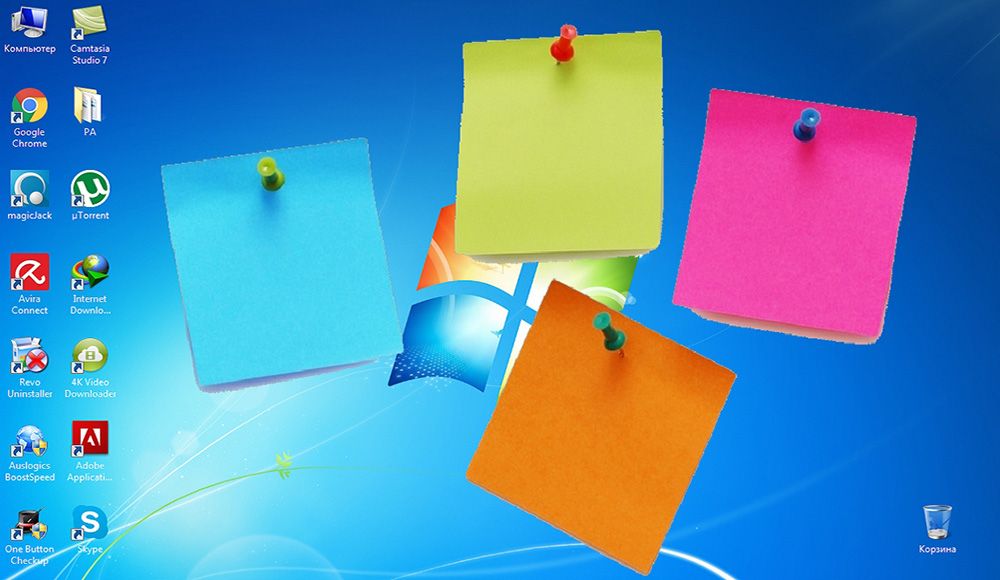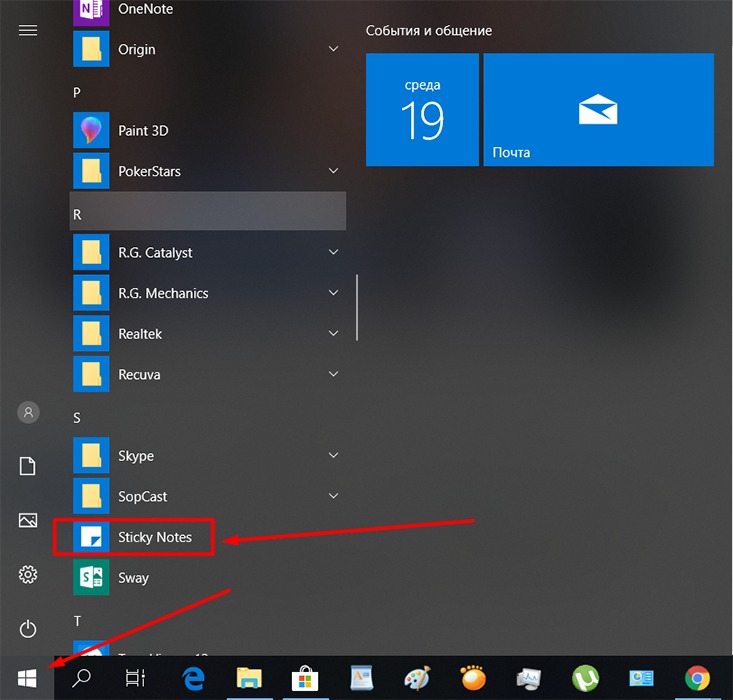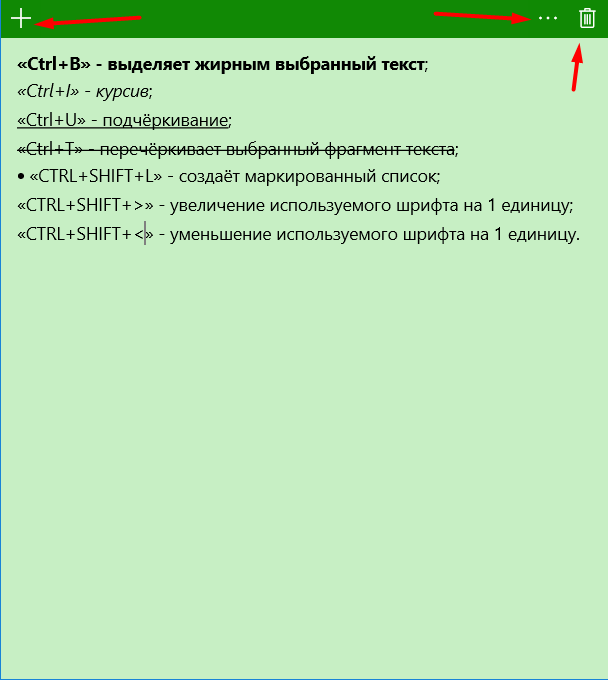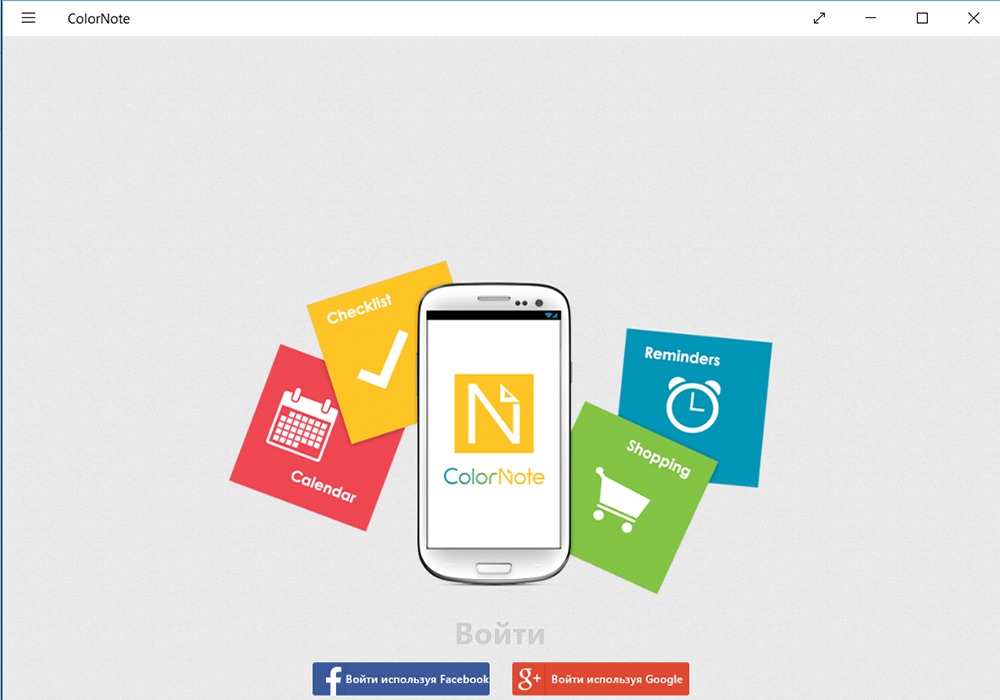Surely at least once in their life, every person was haunted by the thought: “I should have done something, but what?” Some people, in order not to forget to do something, tie knots in the old fashioned way or draw a cross on their wrist, some use diaries, and others use the “reminder” functionality on a smartphone or tablet, fortunately, there are now an abundance of various applications. But it’s not always all at hand, especially for those who spend a huge amount of time at the computer. Many office workers have been using “stickers” for decades and hanging them on their work computer monitors, which is not always aesthetically pleasing or practical, so as not to forget to send a report, redo documents, or simply keep some important information in front of your eyes.
In an attempt to systematize and facilitate the work of these categories of users, at the beginning of the 21st century, Microsoft introduced an application/widget into the Windows operating system that imitated “good old” paper stickers or notes. But not all users, especially now, when many people constantly have a smartphone in their hands, know that this functionality is available now, with a beautiful and clear design and interface, and all with the same great benefits. This article will talk about how to create notes on the Windows 10 operating system and place them on the desktop, how to delete them later, as well as what third-party applications exist with similar functionality.

Options for customizing notes on the Windows desktop.
Established funds
In the Windows 7 operating system, beloved by many, creating notes was as simple as possible and consisted of only two steps – open “Start” and click on the “Notes” icon, which was located in the quick access menu. To be fair, it should be noted that in Windows 10 the functionality in question is not complicated in any way. The only exception is that this version of the operating system itself has become more “European”, and this has led to the fact that most sections in the Start menu have names in English. Of course, this is precisely what causes difficulties for users, since the list of sections, even just with built-in software, is huge, and it’s quite easy, without knowing what you’re looking for, to get lost in this variety. So, moving on to the main question of the topic under consideration, to create a note and place it on your desktop you will need to do the following:
- open “Start” by clicking the mouse or using the “WIN” button;
- click on the first letter you come across to open the alphabetical index;
- in the table with the Russian and English alphabet, select the letter “S”;
- in the list that opens, click on the line “Sticky Notes”, which translates as “Notes”.

Further actions depend on the wishes of the user. The functionality of “Sticky Notes” is incomparable to a text editor, but it also has a fairly good selection of editing and formatting, namely:
- To resize the window, just drag the mouse cursor over the right or left corner.
- To create a new entry, click on the “+” icon in the upper left corner.
- To change the background color, click on the “…” button.
- To delete an entry, click on the corresponding trash can icon in the upper right corner of the window or press the key combination “Ctrl + D”.
- To change the text format, use a keyboard shortcut and highlight part of the text. There are 7 familiar combinations available for use:
- “Ctrl + B” – highlights the selected text in bold;
- “Ctrl + I” – italics;
- “Ctrl + U” – underline;
- “Ctrl + T” – crosses out the selected text fragment;
- “CTRL + SHIFT + L” – creates a bulleted list;
- “CTRL + SHIFT + >” – increase the used font by 1 unit;
- “CTRL + SHIFT + <” – decrease the used font by 1 unit.

In fact, for normal operation with the type of recording in question, nothing else is required, and these 8 combinations are more than enough to give the recording an aesthetic appearance.
Third Party Applications
For those who are not satisfied with the above capabilities of the standard tool, there are dozens of applications with similar functionality in the Windows Store. And of all the diversity provided, we should highlight several of the most interesting and free applications, which, according to some users, will satisfy all, even quite exotic, user requests: “ColorNote”, “Quick Notes”, “Sticky Notes 8”, “Fluent Sticky Notes” , “Sticky Notes – Post Virtual Notes on Your Desktop”, “Pin Note”. From the presented list, an application called “ColorNote” deservedly stands out, which has a nice external shell and a fairly clear interface and has the ability to register using the Google service, which allows you to achieve a certain synchronization.

Conclusion
In conclusion, it’s worth saying that the rest of the applications are essentially no different from the standard “Sticky Notes”. And even the functionality and external shell in these and any other similar applications not only do not have significant advantages, but are also in many ways inferior to the development from Microsoft.